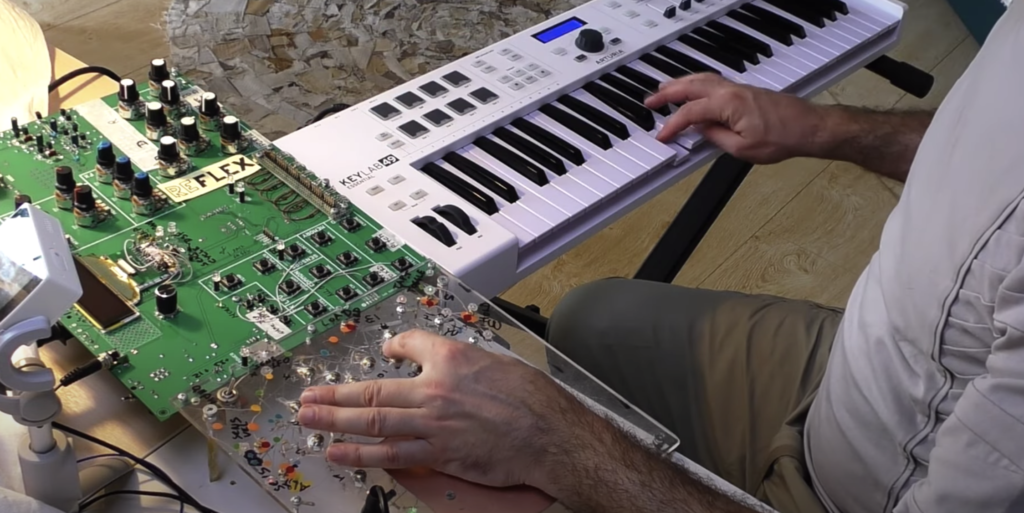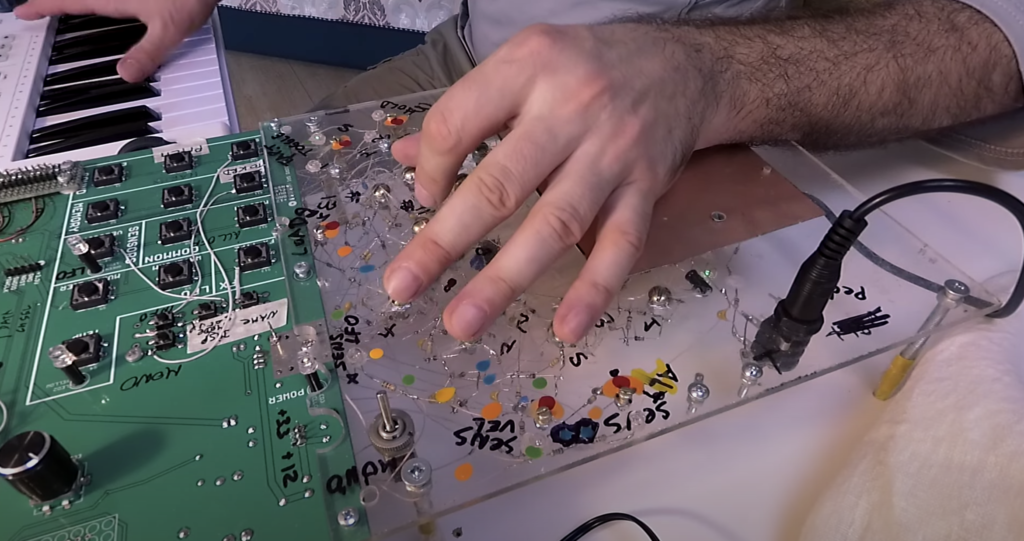Soma REFLEX, Vlad Kreimer’s new super-expressive digital poly synth promises an unparalleled level of real-time control over both timbre & sound.
The synthesizer world has its legends in music but also in development. Bob Moog, Dave Smith, Dave Rossum, Tom Oberheim, Don Buchla, all people who shaped the synthesizer, today as in the past. Even today in the clearly fast-paced world, we have developers who go down in the synth history. I think of Emilie Gillet or Vlad Kreimer.
Vlad enriched us with very unique instruments that were innovative and different. Instruments that did not follow a trend. And with his new instrument, REFLEX, he does it again.
Soma REFLEX
Vlad Kreimer has published a video on YouTube where he gives us a sneak preview of his upcoming Synthesizer Reflex. He writes:
REFLEX is a revolutionary new digital six-voice polyphonic synthesizer with several unique features and innovations. The main idea is to provide an unparalleled level of real-time control over both timbre and sound, merging the creation of timbres and the act of playing notes into a single process. For the vast majority of electronic instruments throughout human history, this has always been two separate processes.
This approach offers musicians a new level of sound flexibility and expressiveness. On a philosophical level, this project aims to redefine and rethink what flexibility in sound and performance can mean for the modern musician. In a broader sense, it explores the concept of flexibility as a common phenomenon and a key distinguishing feature of our modern world, and also for future humans. Hence the name – REFLEX.
REFLEX is the first complex synthesizer where the main goal is to give musicians direct access to the synthesis core, instantly playing dozens of synthesis parameters as artistically and intuitively as we play notes and velocity on, for example, a violin.
Features
To achieve this, Vlad Kreimer and his team have developed a unique multi-dimensional sensor controller with 16 small hemispheres arranged ergonomically in a way that provides comfortable and simultaneous access to all of them for the fingers of your hand.
Each hemisphere contains a tiny version of a high frequency transmitter-air-receiver chain, where the human finger functions as a kind of obstacle that affects the connection. It captures the position of your palm and fingers from 16 points of view. The sensor data collected by each hemisphere is connected in a smart way with one or more synthesis parameters. Combinations of several sensors can be processed in a separate way and attached to a unique set of synthesis parameters. Sensor output is processed at a speed of 23 kHz, which is higher than the audio range, and reaches the synthesis core with latency of no more than 50 microseconds. Tiny movements of your fingers can drive the very synthesis core, letting you play with the process of synthesis directly and instantly.
REFLEX will feature a pure math synthesis engine that is specially designed for this instrument. There is no classic synthesis at all (wavetables, samples…). It uses deep maths that generates sound here and now that is very sensitive to even the tiniest signals from the sensor controller. This should give you the feeling that the instrument is with you even more.
Hardware
When it comes to hardware, too, Vlad only relies on his own developments.
The hardware part of REFLEX is also unique. Starting the work on a digital synth I was very concerned with how to bring our beloved analog LYRA-like sound quality into the digital realm. Existing digital-to-analogue converters available in industrial volumes did not meet our demands. So I decided to develop my own conversion system. It works with several Pulse Width Modulators with direct raw outputs, scaled relatively to each other in order to gain the necessary resolution.
At the end, there is a special analog part that finalizes the signal. This analog part is built with discrete through-hole components and discrete transistors (there are no OPAMPs in the circuit!) without significant long negative feedback loops (the famous Hi-End approach). The analog part uses unique germanium transistors and WIMA capacitors that give warmness and nobility to the sound.
REFLEX is also a multiprocessor system where each of the six voices is actually a separate mini computer (a special dedicated high-performance microcontroller) with its own clock crystal and analog part. REFLEX has no global FX but instead six separate FX units built in each voice, each of which can be driven according to the current state of its voice and the note it plays. Each FX unit also takes part in the synthesis of its voice including complex feedback.
The end result of these innovative solutions is a very high sound quality, actually rare for a digital instrument. The analog mixing of voices output makes it possible to hear and distinguish each note as brightly and as separately as in old analog synthesizers because each note actually is generated by its own complete monophonic synth.
User Interface
From the user interface side, REFLEX strikes the perfect balance between amazing possibilities and simplicity. Despite the big underlying complexity of this synthesizer, it is surprisingly easy to use. There are just 17 analog-style knobs with fixed functions (no multifunctional knobs). There is no menu diving. Everything is as simple as possible, letting you focus on making and playing music!
The firmware of REFLEX is upgradable. We plan to continue releasing synthesis algorithms after launch.
First Impression
The Soma REFLEX project sounds super exciting. As you noticed here, I copy-paste the text because Vlad Kreimer went into great detail and he can probably describe the whole thing best himself. I am fascinated to see how he approaches the development of his synthesizer. Very different from a classic synth company. Much with a view of the future and how he can bring music creation forward.
There is still a lot of work to be done by the developer, but I think this will be something very special.
Soma REFLEX will cost between 1300 – 1400€ without VAT, shipping, bank, Paypal and customs fees. The exact price will be announced once REFLEXgets closer to production. The expected release date: 2022/2023.
More information here: Soma






Be the first to comment